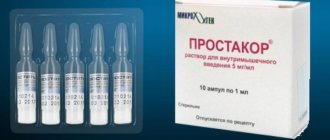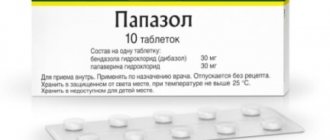Indications for use of Fastum gel
According to the instructions, Fastum gel is indicated for use in the treatment of diseases of the musculoskeletal system. The gel is effective for:
- Rheumatoid arthritis;
- Articular syndrome due to exacerbation of gout;
- Osteochondrosis with radicular syndrome;
- Ankylosing spondylitis;
- Psoriatic arthritis;
- Osteoarthrosis;
- Bursitis;
- Inflammatory lesions of tendons and ligaments;
- Lumbago;
- Sciatica.
In addition, the use of Fastum gel is effective for myalgia (both non-rheumatic and rheumatic origin) and post-traumatic inflammation of the musculoskeletal system and soft tissues.
Pharmacological authorities
Pharmacodynamics.
Ketoprofen provides anti-inflammatory and analgesic action.
Ketoprofen, which is placed at the top of the eye, reaches the inflamed zone through the skin and thus ensures the possibility of local treatment of the pain in the joints, tendons, ligaments and muscles that accompany There is a pain syndrome.
Pharmacokinetics.
When the drug is soaked, applied to the skin, the blood flow through the skin is completely free. When 50 to 150 mg of ketoprofen is applied, the concentration of active substance in blood plasma after 5-8 years becomes less than 0.08-0.15 mcg/ml.
Contraindications
Fastum gel is contraindicated for use in the following cases:
- If you have a history of bronchospasm, rhinitis or urticaria, which were caused by taking acetylsalicylic acid;
- For weeping dermatoses, infected abrasions, eczema and wounds;
- In the third trimester of pregnancy;
- In pediatrics (up to 12 years);
- During lactation;
- In case of hypersensitivity to the components of the gel, as well as to acetylsalicylic acid and other non-steroidal anti-inflammatory drugs.
Fastum gel according to the instructions is recommended to be used with caution when:
- Erosive and ulcerative lesions of the gastrointestinal tract;
- Chronic heart failure;
- Severe renal and liver dysfunction;
- Hepatic porphyria;
- Bronchial asthma.
After applying Fastum gel, you should immediately wash your hands, and you should also be careful not to apply or accidentally get the medicine on inflamed skin, open wounds, eyes and mucous membranes.
According to the instructions, Fastum Gel cannot be used with subsequent application of airtight bandages.
Contraindicated
- Any history of photosensitivity reactions;
- in response to hypersensitivity reactions, such as symptoms of bronchial asthma, allergic rhinitis or urticaria, which occurs when ingested ketoprofen, fenofibrate, tiaprofenic acid, acetylsalicylic acid or others non-steroidal anti-inflammatory drugs;
- a history of severe manifestations of allergies when taking ketoprofen, tiaprofenic acid, fenofibrate, ultraviolet (UV) blockers or perfumes;
- infusion of sleepy changes (infusion of pink light) or UV-impregnation in a solarium after an hour of gel bathing and a 2-stretch stretch after application;
- hypersensitivity to any components of the drug;
- Do not use the gel if there are pathological changes on the skin, such as weeping dermatoses, chapped skin, irritation, skin injuries, swelling, eczema or acne, or infectious processes of the skin and open wounds. ;
- III trimester of gestation.
How to use Fastum gel
Fastum gel is used externally, applying the product no more than twice a day to areas of inflammation.
The amount of product used depends on the size of the area being treated. To apply the gel, as a rule, a column of three to five centimeters in length is sufficient.
According to the instructions, it is not recommended to use the gel for longer than two weeks.
Long-term use of Fastum Gel may lead to increased sensitivity or local irritation. Therefore, in order to avoid manifestations of photosensitivity or hypersensitivity, prolonged exposure to the sun, as well as visiting a solarium during therapy and for at least two weeks after the end of therapy, is not recommended.
According to indications, it is possible to use Fastum gel in combination with physiotherapy (iontophoresis and phonophoresis).
Fastum gel has extremely low systemic absorption, and therefore an overdose of the drug is unlikely.
Reviews
- Oksana, 28 years old. Our family doesn't really like visiting hospitals or taking medications. We prefer to lead a healthy lifestyle and carry out preventive measures: hardening, herbal medicine. But sometimes there are cases when you cannot do without pharmaceutical drugs and you have to buy them. Among the few medications in our home medicine cabinet, Fastum Gel has recently become firmly established. It has already happened, and more than once, that it literally helped out in a difficult situation - a fast and reliable drug. For example, he helped my mother get rid of back pain when she was hard at work in the garden. They applied it to my husband's shoulder when he suffered a sprain. I myself periodically use the gel when I overdo it in training. I really like it: there is no strong smell, clothes do not get dirty, as they are absorbed very quickly;
- Alexey, 44 years old. I am the coach of our city athletics team. I always use Fastum Gel and recommend it to all my guys - we always have it on hand both at home and when traveling to competitions. With minor injuries, he is able to instantly get you back on your feet! Our doctor is always on guard, but if there is a sprain or muscle pain, use only Fastum gel;
- Antonina, 63 years old. Now I’m already a pensioner, but I’ve been suffering from my back since I was young. I’ve tried so many medications in my entire life—I can’t remember them all! Now there is a real salvation for me - Fastum gel. I rub my back with it and after 10 minutes I forget about the pain!
Side effects of Fastum gel
According to reviews, Fastum Gel usually does not cause significant side effects.
The most common local reactions when using the gel include:
- Eczema;
- Allergic dermatitis;
- Purpura;
- Photodermatitis;
- Skin hyperemia;
- Exanthema;
- Bullous dermatitis.
If the described side effects develop, use of the gel should be discontinued.
When using Fastum gel, according to reviews, in rare cases, systemic reactions may occur in the form of:
- Urticaria;
- Edema;
- Generalized skin rash;
- Stomatitis;
- Photosensitivity.
In very rare cases, during the use of Fastum Gel, according to reviews, gastrointestinal disorders develop in the form of diarrhea, bleeding or peptic ulcers.
Composition and packaging
Fastum gel ointment includes:
- ketoprofen – 2.5%;
- ethanol – 96%;
- neroli oil;
- lavender oil;
- distilled water;
- carbomer 940;
- trolamine
Ketoprofen has an anti-inflammatory effect. Neroli oil has bactericidal and antispasmodic properties, helps cope with sleep disorders, and relieves stress. Lavender oil has a pleasant smell and has an analgesic and antiseptic effect. At the pharmacy you can buy containers of 30,50,100 grams.
Overdose
If the fragments of rhubarb ketoprofen penetrate through the skin, the blood plasma level is low, then overdose is less likely. The development of systemic adverse reactions is possible when the drug is infused for three hours, in high doses or on large areas of the skin. Vigorous oral administration of the gel may cause drowsiness, confusion, fatigue, vomiting, and pain in the epigastric region. These symptoms are expected to subside after appropriate symptomatic treatment. High doses of ketoprofen with systemic ingestion can cause bradypain, coma, convulsions, scutulo-intestinal hemorrhage, acute insufficiency and swelling or decreased arterial pressure.
Likuvannya.
There is no specific antidote; symptomatic treatment is recommended in order to maintain vital functions of the body.
Interactions with other medicinal drugs and other types of interactions
It is advised that there is no interaction between the drug Fastum® gel and other medications, but it is recommended to regularly monitor patients who are taking coumarin-type drugs.
Systemic absorption of ketoprofen from local stagnation is very low, and it is reported that there is no interaction with other drugs under the hour of administration of the drug Fastum® gel, unless the interaction occurs. detected when taking oral forms of ketoprofen or other non-steroidal anti-inflammatory drugs (NSAIDs).
Ketoprofen may inhibit the elimination of methotrexate and lithium salts to a minimum and alter the effectiveness of certain diuretics, such as thiazides and furosemide. Concurrent administration of high doses of methotrexate is not recommended due to decreased excretion of methotrexate, which significantly increases its toxicity.
Immediate use of acetylsalicylic acid or other non-steroidal anti-inflammatory drugs may result in their effects as well as the side effects they cause.
The immediate administration of probenecid and ketoprofen leads to a decrease in the plasma clearance of ketoprofen and its binding to proteins.
Treatment with anticoagulants, antithrombotic agents, acetylsalicylic acid or other non-steroidal anti-inflammatory drugs, glucocorticosteroids is effective in the case of essential drugs.
With one-hour administration of ketoprofen and cardiac glycosides and cyclosporine, their toxicity is due to decreased excretion. Ketoprofen may reverse the effect of diuretics and antihypertensive drugs, enhance the effectiveness of oral hypoglycemic drugs - similar sulfonyl compounds, as well as certain anti-seizure drugs (phenytoin).
Simultaneous administration of ketoprofen and diuretics or angiotensin convertase inhibitors increases the risk of impaired function of the nervous system. Ketoprofen can replace the effect of mifepristone, so between the course of treatment with mifepristone and the beginning of ketoprofen therapy, at least 8 days can pass.
Features of good stagnation
The gel will be used to prevent illness from heart, liver or nitric deficiency. There have been reports of isolated episodes of systemic adverse reactions associated with the severity of the disease. Local exposure to high doses of the drug can lead to systemic effects such as hypersensitivity and bronchial asthma.
Patients with bronchial asthma and those with chronic rhinitis, chronic sinusitis and/or nasal polyps have a higher risk of allergy to aspirin and/or non-steroidal anti-inflammatory drugs, Izhta population.
The drug should be used with caution in patients with peptic varicose veins or a history of inflamed intestines, cerebrovascular hemorrhage or hemorrhagic diathesis.
Do not exceed the recommended strength of the gel and the friction of the bath, as over time the risk of developing contact dermatitis and the reaction of photosensitivity increases. In addition, the following guard entry points must be followed:
- After applying the drug to the skin, wash your hands carefully;
- if any severe reactions occur, including those associated with concomitant condensation of products containing octocrylene, immediately apply the gel bath;
- the gel should not be immediately sealed with an airtight bandage;
- to understand the development of the photosensitivity reaction of the skin, it is recommended to protect with clothing the parts of the skin on which the drug is applied, before drying for an hour and for 2 days after application;
- the gel does not harden on the mucous membranes, on areas around the eyes or internally;
- If the gel needs to harden for three hours, then use surgical gloves.
It is recommended that the container with a mechanical dispenser be kept in a horizontal position when positioned vertically. Do not place the gel in the open half of the area, as this will prevent the alcohol from being mixed.
The drug should only be used externally. If the hour of application of the gel is missed, the dose should not be adjusted if the drug has been ingested for a while.
Do not apply the gel to the anal or genital area. Do not apply the gel at the same time with other skin treatments on the same sections of the skin.
Summer age patients are sicker before adverse reactions appear in chronic NSAIDs.
Suspension during pregnancy or breastfeeding.
I and II trimester of gestation.
The safety of ketoprofen administration to pregnant women was not monitored; in the 1st and 2nd trimester of pregnancy there was no evidence of stagnation.
III trimester of gestation.
All inhibitors of prostaglandin synthesis, including ketoprofen, cause toxic effects on the cardiopulmonary system in the fetus and are not harmful. For example, both the mother and the child may experience bleeding. Due to the induced stagnation, ketoprofen is contraindicated in the third trimester of gestation.
After systemic treatment (orally, rectally, parenterally), traces of ketoprofen are detected in breast milk. Ketoprofen should not be used during breastfeeding.
This is due to the fluidity of the reaction during treatment with vehicles or other mechanisms.
There is no data.










